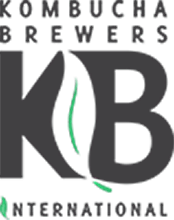Response Surface Methodologyto Optimize a Bioprocess for Kefiran Production
Authors:
Jose Manuel Pais-Chanfrau, Luis Enrique Trujillo Toledo, Paola Margarita Alvarado Condor, Milton Jimmy Cuaran Guerrero, Jimmy Nunez Perez, Leonor Margarita Rivera Intriago
Abstract:
Kefiran is an edible biopolymer formed by a galactose and glucose chain in nearly equal proportions. This biopolymer has important applications in the pharmaceutical and food industries. This is produced by the action of an acid-lactic bacteria and yeast consortium on lactose present in the kefiran granule. In the present work, kefiran concentration in the fermentation broth was optimized by the application of the response surface methodology in a central composite design of thirteen experiments. Temperature and whey powder (WP) content were the analyzed dependent variables. Among the 14 suggested optimal temperature and WP conditions, it was selected 25C for temperature and 44.1% (w/w) for WP as optimal conditions to perform further model validation experiments. Under these conditions, the quadratic model regarding kefiran concentration displayed 209.72 9.77 mg Glu/mL after 48 h of culture. The obtained response surface model was further validated with three additional experiments by using these optimal conditions for temperature and WP content described above. The validation result was 216.06 14.40 mg Glu/mL suggesting that experimental and theoretical models have not significant differences (p 0.05). Kefiran isolation process was carried out from five 100 mL batches each, yielding 3.1 1.3 g/L of kefiran in the culture supernatant.
Keywords: glucose, kefir, ph, temperatureacidity, fermentation, glucuronic acid, high-performance liquid chromatography, kombucha, pomegranate juice, response surface methodology, sucrose, ph value
Country: Ecuador
Citation: La Prensa Medica. 104. 10.4172/lpma.1000285.
Study Mailing Address:
Prof. Jose MANUEL Pais Chanfrau -- Universidad Tcnica del Norte E Facultad de Ingeniera en Ciencias Agropecuarias y Ambientales (FICAYA). The Agro-Industry Engineering
Date Updated: January 25, 2021
 0 people like this study.
0 people like this study.